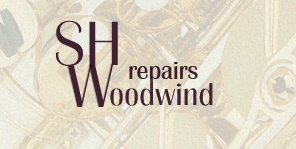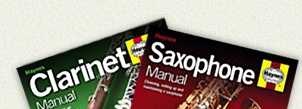

Low A baritone sax extensionThere can surely be no greater disappointment than buying a beautiful vintage bari sax and duly trotting along to a gig - only to be confronted with a piece of music that calls for a low A.Naturally, you can up the note an octave - but it can never be quite the same as a wondrously thunderous low A, and you could be forgiven for feeling a twinge of inadequacy for having a bari that only descends to a modest low Bb. But now your worries are over! Yes - at last, I am about to share with you the greatest trick in the vintage bari player's handbook...the home-made low A extension! First off you need to secure some materials. You'll need a sheet of card (about 18" square should do it), not too stiff and heavy; some wrapping or masking tape; a pencil and a pair of scissors. The design principle is simplicity itself. As the low Bb is the last note on the horn there's nothing beyond it save for the remainder of the bell. In order to achieve a low A all that's required is that the bell is extended, and you can do this by making up an extension that fits down the bell. So, start by rolling the card into a cylinder that fits down the bell
of the horn - but that doesn't reach as far as the low Bb tone
hole (I'd avoid going this deep anyway, as the taper of the bore makes
it difficult to construct a neat cylinder). Note where the edges overlap
and run a pencil down the seam , remove the card and cut it an inch forward
of the mark to leave a bit of overlap for later adjustment if required
(think about this - you want to cut the card slightly too large). Then
line up the seams to the mark as before and run a length of tape down
them to create a cylinder. Now assemble the sax ready for playing. If you have a tuning meter, now's the time to get it out. It will help
in gauging how much card has to protrude in order to produce an in tune
A. If you don't have a tuner, you can use a piano or a tuning fork to
tune to - and if you don't have either of those then you'll have to use
your ear. Bear in mind that you can download freeware 'piano' programs
from the web that will turn your computer into a rudimentary keyboard
- good enough to give you a note to tune to. To blow a low A, just blow your low Bb. Now, make a mark round the cylinder where the bell flare drops into the
bore proper. You need to wrap tape around this mark to act as a stop to
ensure that the cylinder sits in the same position each time it's used.
You might have to fiddle a little to get it exactly right - so apply the
tape a little at a time and only build it up once you're sure you've got
the right spot. And there you have it - a simple but surprisingly effective low A extension. I mentioned that you might be surprised that you didn't have to be too
accurate with regard to positioning, and you may be even more surprised
(and a bit miffed if you've just made a nice cardboard attachment) to
know that you can get a reasonable low A just by rolling up a magazine
and shoving it partway down the bell. It doesn't even need to form a complete
cylinder, the simple addition of an extra few inches length to even a
part of the bell wall is enough to change the tuning. Please note: I am not open to debate as to which magazine imparts the best tone, though personally I find the Sunday Supplements provide the best source of magazine material. |
If you've enjoyed this article or found it useful and would
like to contribute
towards the cost of creating this independent content, please use the button
below.